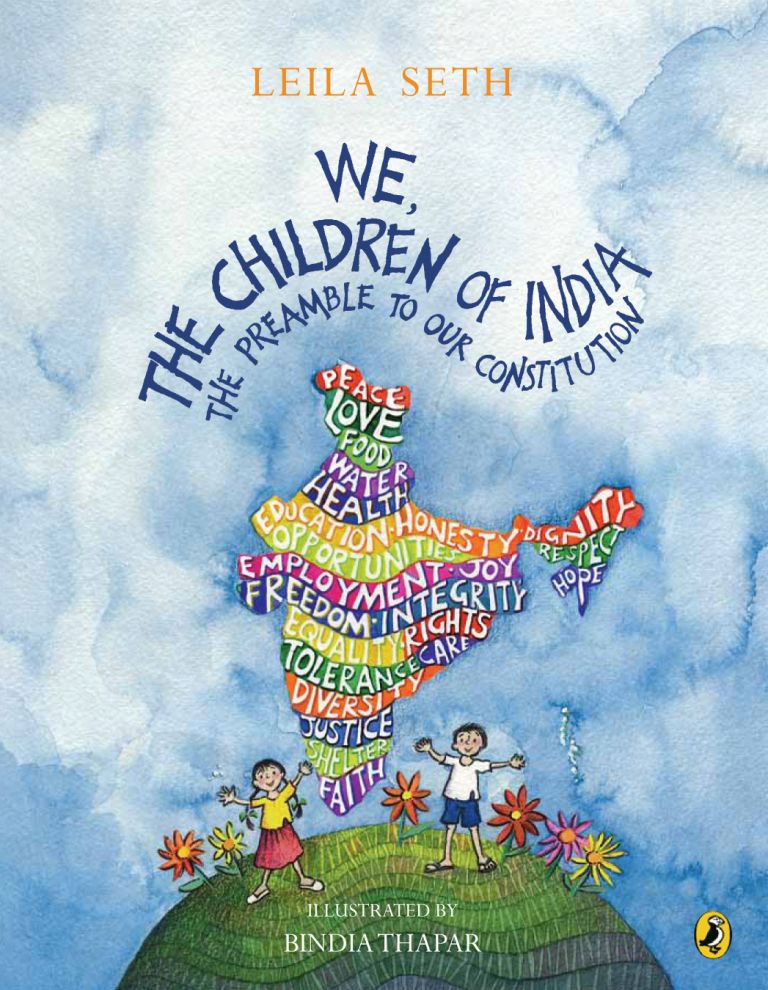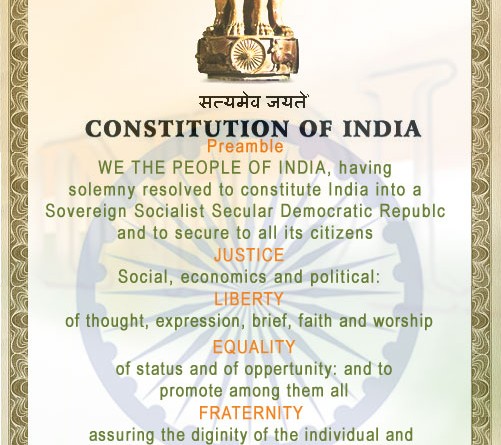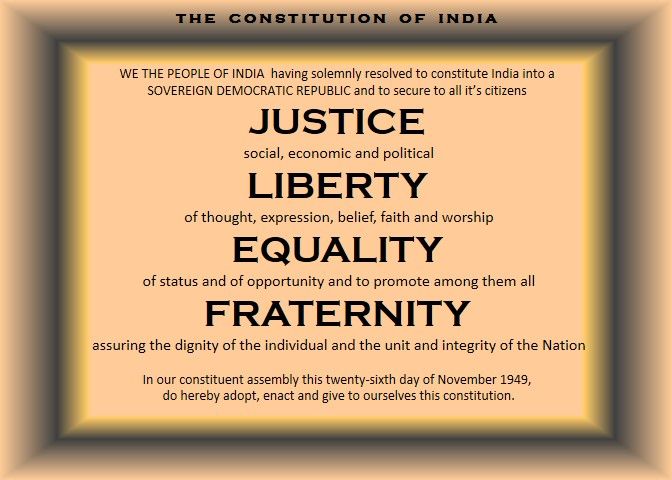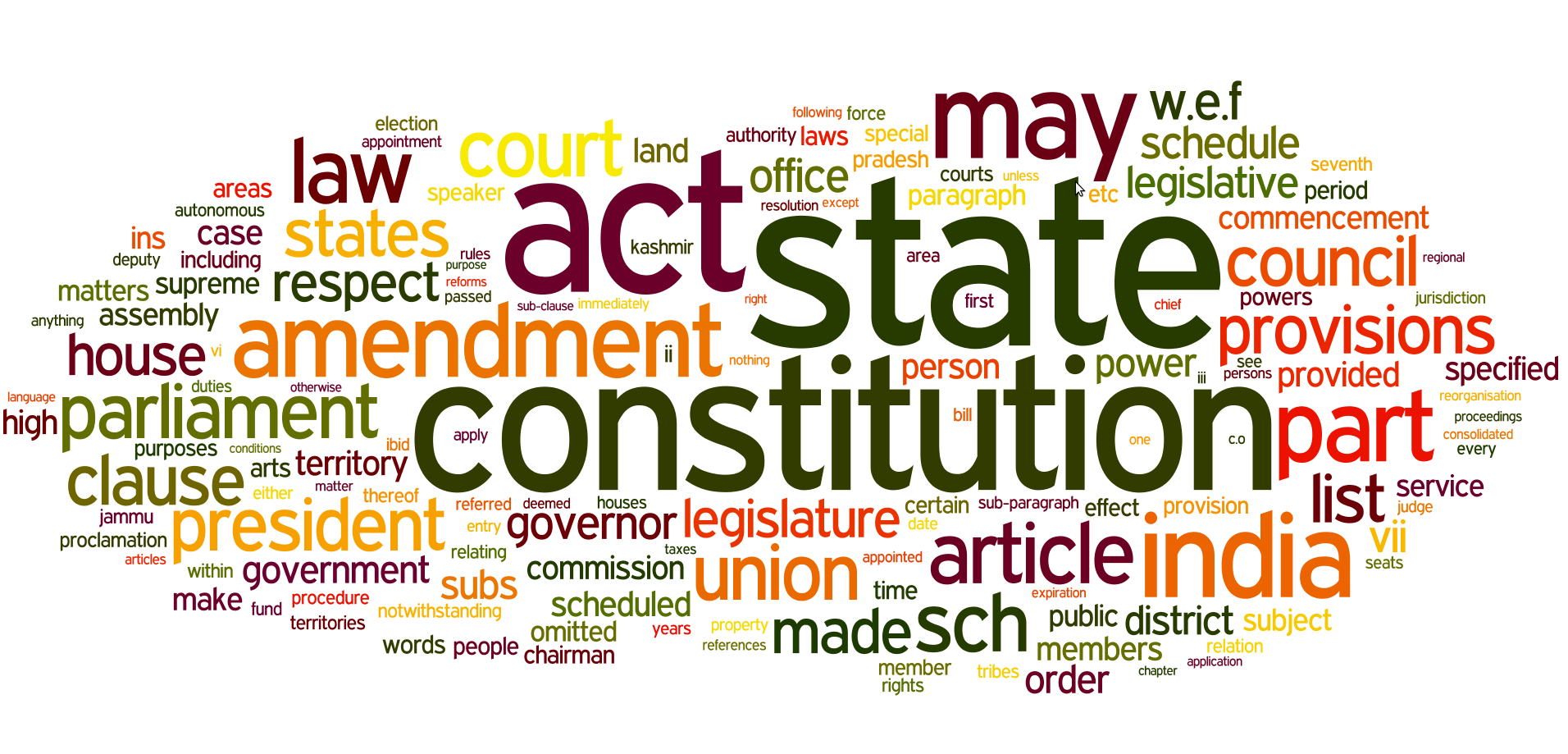Constitution of india
Data: 3.03.2018 / Rating: 4.8 / Views: 652Gallery of Video:
Gallery of Images:
Constitution of india
Constitution of America was the first constitution in the world to begin with a preamble. India, like some other countries, also followed this practice. The preamble of the Indian Constitution is based on the objective Resolution, drafted and moved by Pandit Jawahar Lal Nehru on 13th December, 1946 and passed by the constituent Assembly. The Constitution of India was passed by the Constituent Assembly of India on November 26, 1949, and came into effect on January 26, 1950. India celebrates January 26 each year as Republic Day. It is the longest written constitution of any independent nation in the world, containing 395 articles India is a federal republic with 29 states and six union territories. It has a parliamentary democracy which operates under the constitution of 1950. There is a bicameral federal parliament: the Rajya Sabha or council of states (upper house) and the Lok Sabha or house of the people (lower house). Constitution of India contains 395 articles in 22 parts. Additional articles and parts are inserted later through various amendments. There are also 12 schedules in Indian Constitution. Those who are looking for a summary of Indian Constitution, this post might be the right place to start with. Constitution of India is the system which governs the Republic of India and the Indian Government works according to this system. The Constitution of India was adopted in the year 1949, on the. On January 26, 1950, the Constitution of India came into force, and Republic Day is celebrated to honour that day. On this day in 1950, the first. THE CONSTITUTION OF INDIA WE, THE PEOPLE OF INDIA, having solemnly resolved to constitute India into a 1[SOVEREIGN SOCIALIST SECULAR DEMOCRATIC REPUBLIC and THE CONSTITUTION OF INDIA. PART I THE UNION AND ITS TERRITORY. Name and territory of the Union. Save as otherwise provided by Parliament by law, every Union territory shall be administered by the President acting, to such extent as he thinks fit, through an administrator to be appointed by him with such designation as he may specify. Notwithstanding anything contained in Part VI, the President. About The Constitution of India. This book provides an overview of the content and functioning of the Indian Constitution, with an emphasis on the broader sociopolitical context. legislative department, legislative, law, parliament, drafting, legal draft, bills, resolutions, bill draft, law making, ordinance, legal affairs, legislative affairs. The Constitution of India was adopted by the Constituent Assembly on 26 November 1949, and came into effect on 26 January 1950. The Constituent Assembly was the main body responsible for drafting the constitution of India that would lay the basis of governance. The Constitution of India is the supreme law of India. It is a living document, the permanent instrument which makes the government system work. It lays down the framework defining fundamental political principles, establishes the structure, procedures. The Constitution of Independent India that came into being that day was the culmination of a journey that had begun during the first war of Independence in 1857 when Indian soldiers (rebelling. Fundamental Rights are the basic rights of the common people and inalienable rights of the people who enjoy it under the charter of rights contained in Part III( Article 12 to 35) of Constitution of India. had upheld Parliament's power to amend all parts of the Constitution, including Part III related to Fundamental Rights. The Constitution of India is the supreme law of India. It frames fundamental political principles, procedures, practices, rights, powers, and duties of the government. It imparts constitutional supremacy and not parliamentary supremacy, as it is not created by the Parliament but, by a constituent assembly, and adopted by its people, with a. Full text containing the act, Constitution of India, 1949, with all the sections, schedules, short title, enactment date, and footnotes. WHEREAS the Constitution Club of India was opened in February 1947 with the objectives purposes of fostering social contacts and providing usual amenities of a club life for the benefit of the members of the Indian Constituent Assembly. The Constitution of India is the supreme law in India. The constitution is the framework for political principles, procedures, and powers of government. It is also the longest constitution in the world with 395 articles, 12 schedules. Constitution Day or Samvidhan Divas in India is an officially celebrating event which is celebrated every year on 26th of November to honor and remember the father of. The Constitution of India is the longest written constitution of any sovereign country in the world, containing 444 articles in 22 parts, 12 schedules and 118 amendments, with 146, 385 words in its Englishlanguage version, while the Constitution of Monaco is the shortest written constitution, containing 10 chapters with 97 articles, and a total. The Constitution of India is the supreme law of India. It lays down the framework defining fundamental political principles, establishes the structure, procedures, powers, and duties of government institutions, and sets out fundamental rights, directive principles, and the duties of citizens. Definitions of CONSTITUTION OF INDIA, synonyms, antonyms, derivatives of CONSTITUTION OF INDIA, analogical dictionary of CONSTITUTION OF INDIA (English) Constitutional Law, constitution of India, Constitution Day Whether Criminalization of Money Laundering is Offending Articles 14, 15, 19(1) (g), 20 and 21 of The Indian Constitution It is a law enacted by the government of India as PMLA, 2002 on line with the US laws. The Constitution of India is a document that establishes the political values, the powers of government and the rights of the citizens of the country. It is the supreme law of India and is used by the prime minister, his cabinet of ministers and the courts to govern the country. The Constitution of India is the supreme law of India. [1 It lays down the framework defining fundamental political principles, establishes the structure, procedures, powers and duties of government institutions and sets out fundamental rights, directive principles and the duties of citizens. It is the longest written constitution of any. Sections (20) Reform Proposals (19) U. PREAMBLE: PARTS: SCHEDULES: APPENDICES: INDEX: AMENDMENT ACTS: PARTS. PART I TRADE, COMMERCE AND INTERCOURSE WITHIN THE TERRITORY OF INDIA: Art. ( ) PART XIV: SERVICES UNDER THE UNION AND THE. Save your draft before refreshing this page. Submit any pending changes before refreshing this page. Constitution Club Of India, New Delhi, India. The Constitution Club of India has effectively emerged as a enviable forum providing platform The Constitution of India is the supreme law of India, Its also called as the most fundamental governing document. It describes the type of polity which exists in the Indian state. Written Constitution: The Constitution of India is a written document. However, even though our Constitution has federal features but in the time of need, they. The Constitution of India is the supreme law of India. It lays down the framework defining fundamental political principles, establishes the structure, procedures, powers, and duties of government institutions, and sets out fundamental rights, directive principles, and the duties of citizens. Sep 2018 JK acceded to India under the guarantees provided by the Constitution of India. It is the constituent assembly which incorporated Article 370 in the Constitution providing a. Explore photos videos on Indian Constitution. Also get news from India and world including business, cricket, technology, sports, politics, entertainment. Constitution of India The Indian constitution accords rights to children as citizens of the country, and in keeping with their special status the State has even enacted special laws. The Constitution, promulgated in 1950, encompasses most rights included in the UN Convention on the Rights of the Child as Fundamental Rights and Directive. APPENDIX II (442 KB) (PDF file that opens in a new window) Restatement, with reference to the present text of the Constitution, of the exceptions and modifications subject to which the Constitution applies to the State of Jammu and Kashmir. India, also known as Bharat, is a Union of States. It is a Sovereign Socialist Secular Democratic Republic with a parliamentary system of government. Constitution of the Republic of India. It was adopted by the Constituent Assembly on November 26, 1949, and came into effect on January 26, 1950. India celebrates January 26 each year as Republic Day. It is the longest written constitution of any independent nation in. Constitution Club of India is a club started for members of Indian Constituent Assembly. In present days the Constitution Club acts as a platform for interaction amongst the Past Present Members of Parliament. The club is registered under the Societies Registration Act 1860. The architects of Indias constitution, though drawing on many external sources, were most heavily influenced by the British model of parliamentary democracy. In addition, a number of principles were adopted from the Constitution of the United States of America, including the separation of powers among the major branches of government, the. LAW, COURTS AND THE CONSTITUTION. India has one of the oldest legal systems in the world. Its law and jurisprudence stretches back into the centuries, forming a living tradition which has grown and evolved with the lives of its diverse people. The Constitution of India is the longest written constitution of any sovereign country in the world which consists of a preamble, 22 parts containing 395 articles, 12 schedules and 94 amendments up to date. The Constitution of India Description This book is one of 1, 000 photolithographic reproductions of the Constitution of the Republic of India, which came into effect on January 26, 1950, after being approved by the Constituent Assembly on November 26, 1949. The Constitution of India is the world's lengthiest written constitution with 395 articles and 8 schedules. It contains the good points taken from the constitution's of many countries in the world.
Related Images:
- Open invitation tyrese
- Your love the outfield
- Telecharger video en ligne gratuitement
- Self teaching german
- Best day ever mac miller
- Meherbaan video song
- Window 7 build 7601
- Go apex nova theme
- Manuale Guida Fuoristrada Pdf
- Devious maids s02
- Bingo players get up feat far east movement
- Pinky new booties 2
- Saskia nieuwe buren
- Daz3d g2f wardrobe
- Craquez Pour Le Riz Et Les Nouilles Sautes
- Movie Collection 2018
- Oliver tank dreams
- Face of danger
- Le avventure di tin tin ita
- The sims 4 origin update3
- Wwe monday night raw 29
- Rise of the guardians 3d 2012 1080p bluray
- White girl black
- Easy video suite
- Pharos afrikaans english dictionary
- Superboy futures end 001
- Pinoy hits 2014
- Ios for android
- 2018 hip hop hit
- Dj 2018 album
- Think you can dance s01e01
- Voodoo Dreams A Novel of Marie Laveau
- The oc s01e09
- Once upon a time save henry
- Army of the pharaohs death reborn
- Lick library pod
- Resident 6 update
- Transformers Revenge of the Fallen
- Garmin costa rica
- Come blow your horn
- Armin van buuren a state of trance 514
- Narayan gopal song
- Project runway s07e11
- Night at the museum battle of the smithsonian 1080p
- Learn to read
- Zero Dark Thirty German AC3
- Young doctors in love
- Stack and tilt
- Web dl 1080p fire
- Jedi mind tricks violence begets violence
- Vacanze di natale
- Paranormal witness s01e06
- Farscape french s03
- Heyzo
- Boot vista repair
- The hot rock 1972
- Phenomenon 1996 720
- John adams tv
- 1977 dvd ntsc
- The meltdown s01e05 720
- Cf Moto 500 Atv Service And Repair Manuals
- Grim legends 2 song of the swan
- 1080p ita ghost
- Yamaha Xtz660
- Design patterns java
- Game portable pc
- Merlin complete 720p
- Storage hunters season 3
- 80s 12 inches
- Paragon hard manager 14
- Rpg maker resource
- The possession ita
- Nci season 8 complete
- Fairy tale a true story
- Eres un tonto
- Bar rescue compl
- Dogfight 1942 dlc
- Paranormal witness season 1
- Krauses Food Nutrition Therapy












